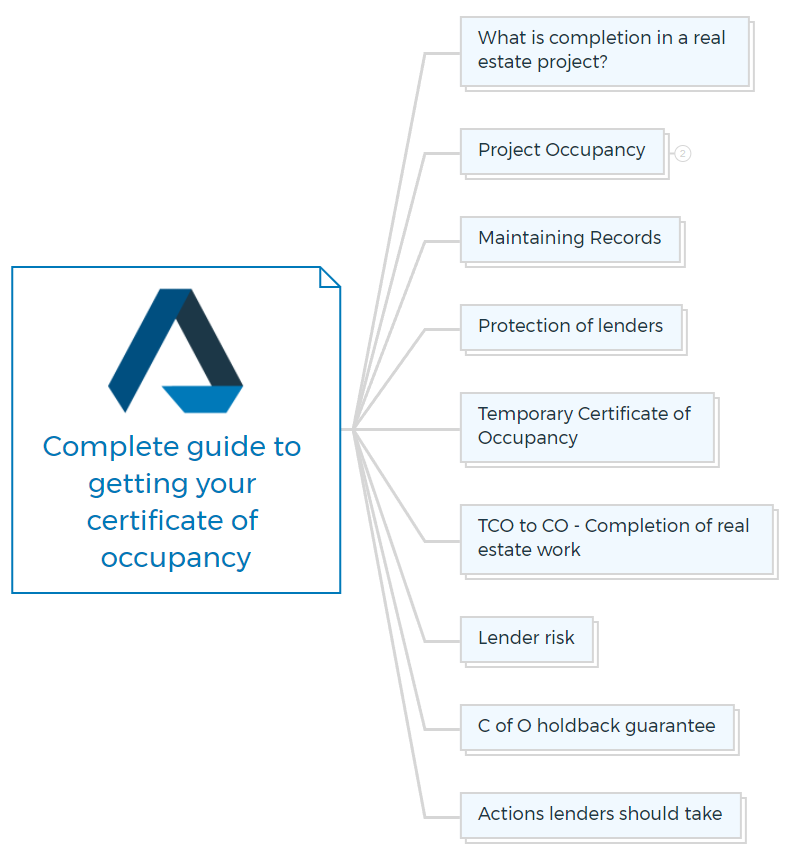Here is the entire process of obtaining a Certificate of Occupancy for your real estate project. Start with the basics, like what it is and why you need it, then move on to the specific steps involved in getting one.
Follow this guide to avoid the common pitfalls that many building owners make and get your certificate as quickly and efficiently as possible.
What is a certificate of occupancy in real estate?
or
What does a certificate of occupancy mean?
In simple terms -
A certificate of occupancy in real estate is a document that ensures the safety of people/occupants living in the building and that the development meets the requirements of the Building Act of 1975 (BA). A certificate of Occupancy (CofO) is previously known as a Certificate of Classification (CofC).
A certificate of occupancy is a document issued by a local government agency certifying that a building meets the minimum standards for safety, health, and welfare as established by the State's Building Code.
You must obtain the certificate before any commercial activity can take place in an establishment. In some cases, it may even be required before occupying a residential building.
This certificate also specifies the building class and its purpose, which is critical for knowing the occupancy type and uses of a building.

Why certificate of occupancy in real estate required?
Having a certificate of occupancy is essential for any business operating in the real estate industry as it denotes that the building has been inspected by local authorities and meets all legal requirements.
It also indicates that the building is safe and suitable for its intended purpose. The permit must be displayed in a prominent location in the building.
What happens if you don't have a certificate of occupancy?
Without a certificate of occupancy, a business may not be allowed to open or operate in the building legally, so you must obtain one before opening your doors.
If you are not having a Certificate of Occupancy, your investment property is a wasting asset, burdened by ongoing construction loan interest and, perhaps, obsolescence, in addition to ongoing tax, maintenance, and utility expenditures.
So if you are planning to build a new home or office, make sure you apply for an occupancy permit as soon as construction is completed.
How to get/obtain a certificate of occupancy?
Once the building work is completed, the owner of the building or the land on which the building is developed can apply for the certificate of occupancy.
The process for obtaining a certificate of occupancy can vary from state to state, but in general, you should follow the below steps:
- Submit a certificate of occupancy application form to your county or municipality.
- Collect plans and documents from the building owner or developer that detail the construction of the building and its compliance with applicable state codes.
- Have local inspections performed by approved inspectors.
- Submit the certificate of occupancy application with all necessary plans and documents to the local authority for review and approval.
- Once approved, pay all applicable fees and receive your certificate of occupancy.
Bring the below documents when applying for an occupancy permit certificate.
Checklist for an occupancy permit
Before applying for the Occupancy Permit, tick all the boxes on the checklist. It includes -
- Certificates -
- Plumbing certificate
- Electrical certificate
- Insulation Certificate
- Glazing certificate
- Termite protection certificate
- Compliance certificate
- Occupancy application form
- Engineers inspection reports
- A letter by the builder for waterproofing of wet areas.
- Declaration for fire-rated boundary wall installation
- Declaration for fireplace installation
- Council approval for septic tank installation
- Energy rating report
- Outstanding fees.

Usually, it's up to the owner to get the certificate, but in Victoria, this certificate is required by the builder before asking for the final payment.
In any case, if the certificate of occupancy is not issued due to the poor work on the development site, the builder/contractor is obligated to return to the site and make the necessary repairs.
Sometimes even after adequately carrying out the construction work and submitting all the essential documents, your building project may only acquire a temporary certificate of occupancy, not a permanent one.
The developer or builder must finish specific tasks to get the permanent occupancy certificate. For example, installing a ceiling fixture, adding the final coat of stucco, finishing the insulation and moulding around windows, etc.

Get The Edge Now!
Discover the transformative power of our FREE EDGE platform and
unlock a world of opportunities at no cost!

Your Real Estate Toolkit Awaits!
Free eBooks, Courses & Feasibility Suite Trial—Join Today!
✓ Unlimited FREE Trial: Experience the full power of our Feasibility Suite with hands-on demos
—explore without limits, no time pressure & without commitment or credit card!
✓ Learn from Success: Dive into real-life case studies for practical insights.
✓ Engage, Inquire, and Innovate: Ask questions, request features, and engage in lively discussions.
✓ Showcase Your Projects and Gain Insights: Share your projects and get personalised feedback.
✓ Free Resources Galore: Access a treasure trove of free resources,
eBooks & courses to keep you informed.
✓ Exclusive Training: Enjoy members-only training to sharpen your skills.
How long does a certificate of occupancy take?
It depends on the activity and condition of your building. In general, if your development project is in line with all building code regulations of your state, you will get your certificate within 30 days of submitting the final occupation certification application.
When to get/use an occupancy permit?
When you wish to occupy or use a new building or modify the use of an existing building, you will need an occupancy certificate.
Your certificate will be issued if your development project or constructed building meets the requirements of the regulatory standards and is suitable for living according to the building code classification of your state.
Who pays for a certificate of occupancy?
The owner needs to pay for the certificate of occupancy. If a council issues your certificate, you must pay a statutory fee set by the planning, development and infrastructure notice.
While if you are getting your occupancy permit from a building certifier or surveyor, they can charge some private fees for the building inspection and other works.
Does the certificate of occupancy expire?
An occupancy certificate will never expire.
Who issues an occupancy certificate?
Your building surveyor issues both the certificate of occupancy and the certificate of final inspection. The surveyor carries out the building inspection and then issues the permit certificate if everything is in order and according to the codes.

When is the certificate of occupancy issued?
The certificate of occupancy will be issued once all the steps in the process have been completed and the local authority has approved it. This usually takes 2-4 weeks, depending on your locality and how quickly you can submit all the necessary paperwork and documents.
What is the final inspection?
The final inspection is the last step in obtaining a certificate of occupancy. It involves an inspector from the local government or building department coming to inspect the building and ensuring that it meets all of the applicable safety, health, and welfare standards set out by the state's Building Code.
Once this inspection is passed, you will be issued with your final inspection certificate or certificate of occupancy.
Completion certificate vs occupancy certificate
A completion certificate is a certificate that states that a building or structure has been completed following the approved plans and specifications. On the other hand, an occupancy certificate declares that a building or structure is safe for use based on accepted occupancy standards.
Typically, an occupancy certificate will not be issued until the owner/developer has provided evidence of conformance with all applicable codes and ordinances (e.g., fire safety, life safety, accessibility, etc.), as well as compliance with any special permit conditions that the city or municipality may have imposed.
Certificate of occupancy vs final inspection
A certificate of occupancy and final inspection are two separate but related steps in obtaining a certificate of occupancy.
The certificate of occupancy is the official document that certifies that a building meets all safety, health, and welfare standards as established by the state's Building Code.
The final inspection is an onsite visit conducted by an inspector to make sure that the building is being built according to these standards. Both steps must be completed before you can receive your certificate of occupancy.
Bottom line
So, here you are with all the details required to get the occupancy certificate quickly. Before submitting an application for a certificate of occupancy, ensure you have all the necessary paperwork and verify its authenticity.
Throughout the process of developing their property, I am there to inform and protect my clients from making any mistakes. If you want me to show you the way and keep an eye on you, I'm ready to help.
Just sign up for my 1-ON-1 mentoring programme, and you can be sure that your real estate career will be a success.
FAQs

